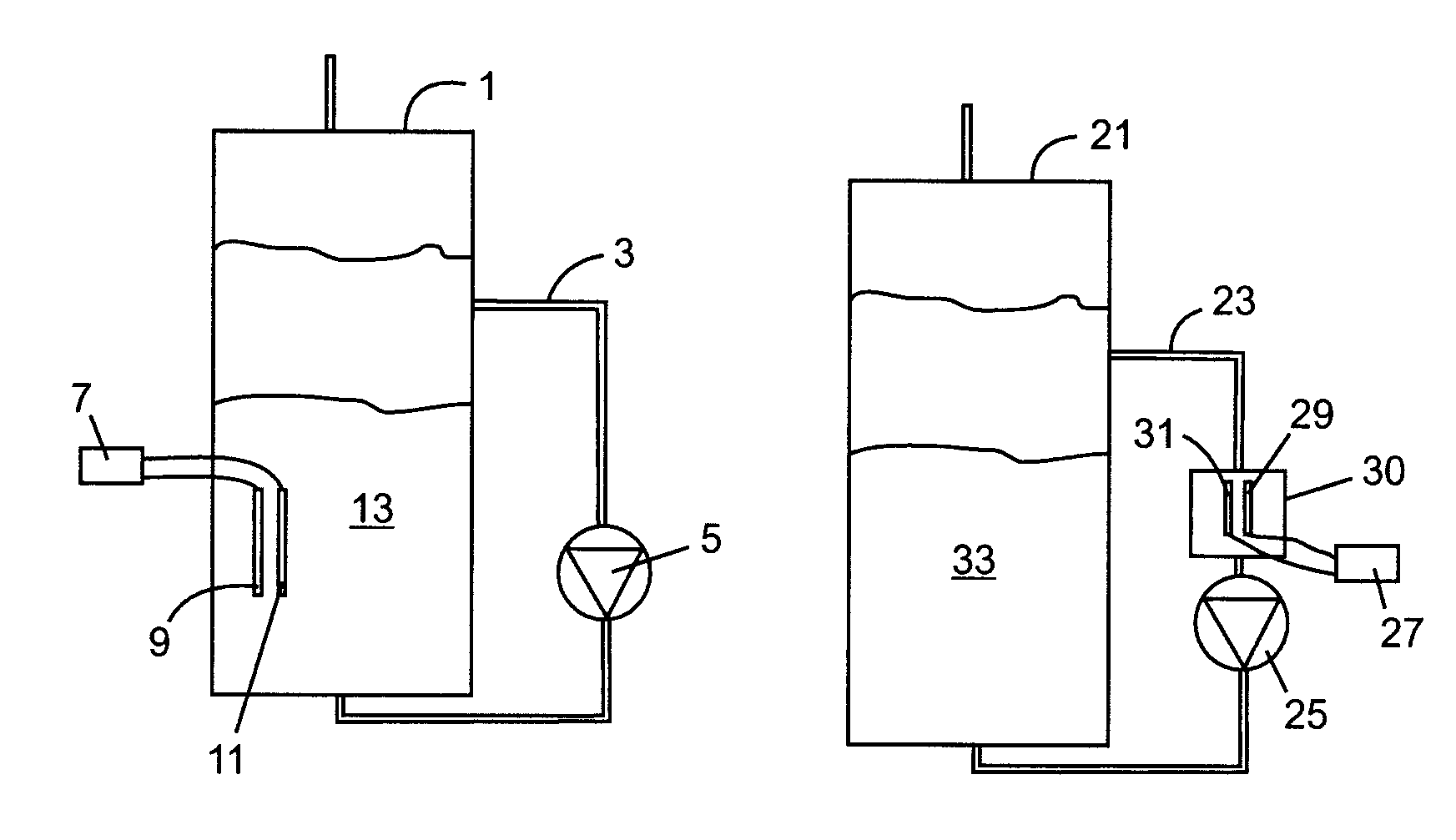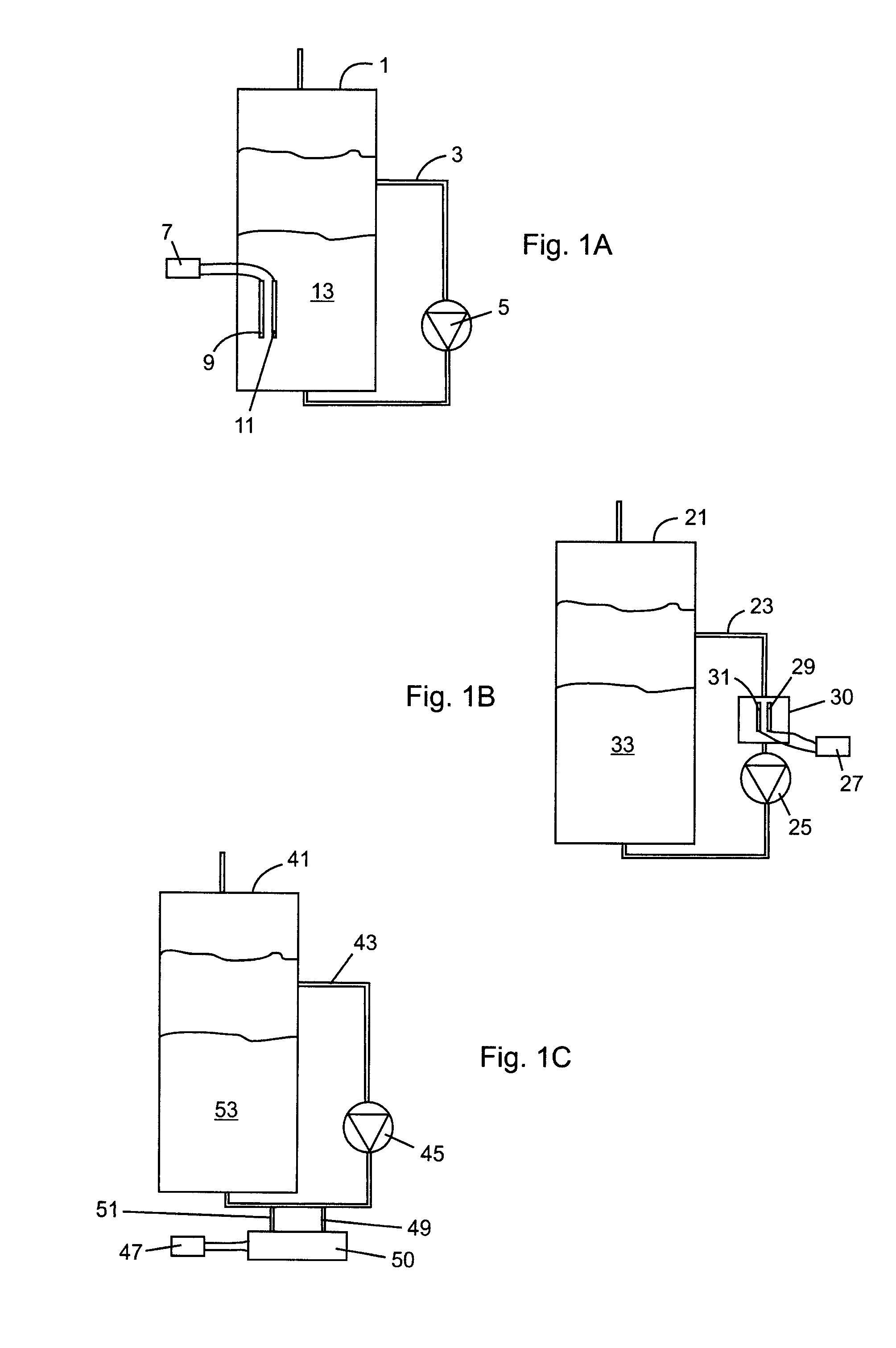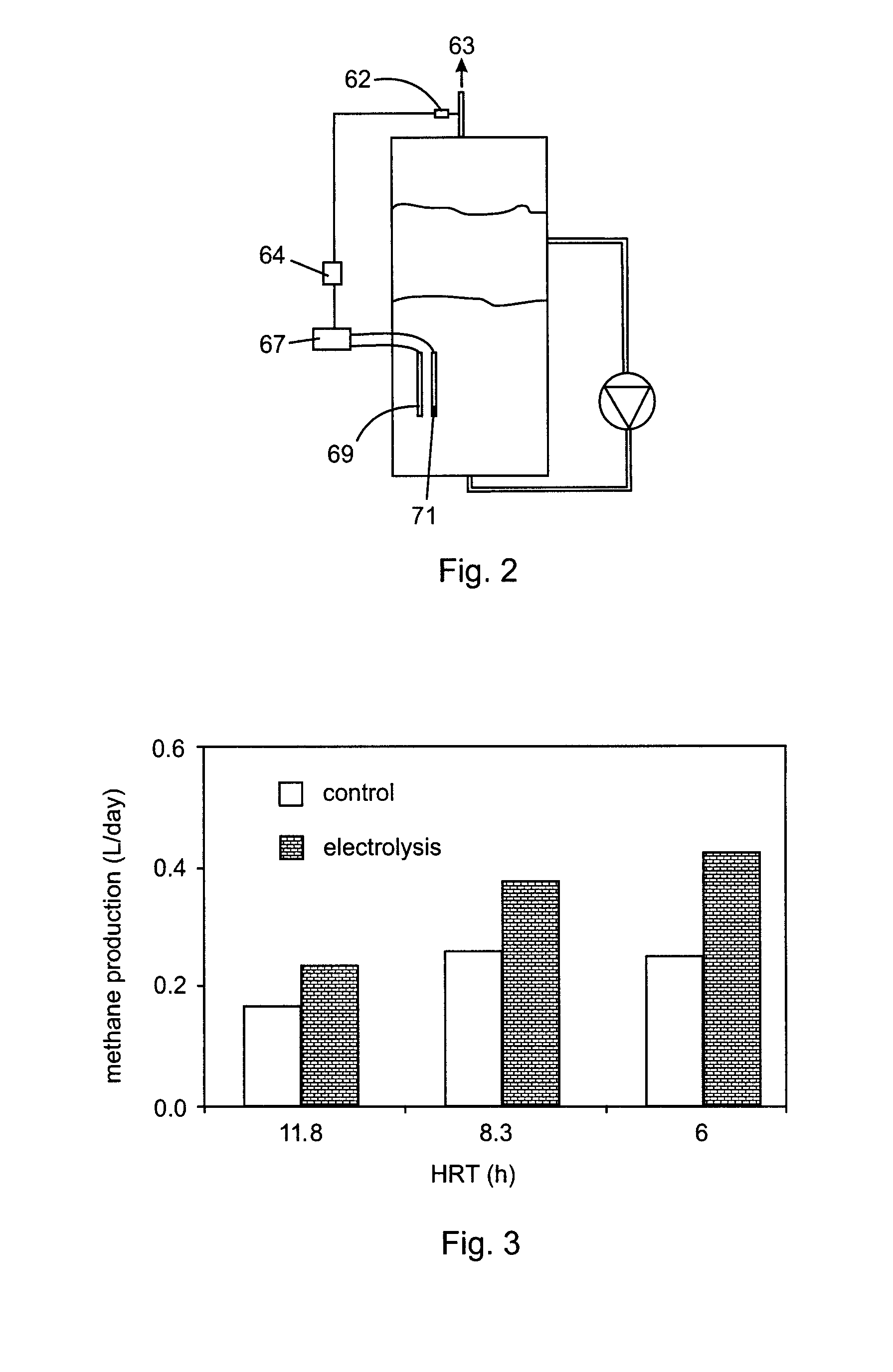Microbially-assisted water electrolysis for improving biomethane production
a technology of biomethane and water electrolysis, which is applied in the field of methane production, can solve the problems of limiting the application of organic waste energy recovery, achieve the effects of reducing gas amount, reducing surface area, and increasing electrolysis efficiency
- Summary
- Abstract
- Description
- Claims
- Application Information
AI Technical Summary
Benefits of technology
Problems solved by technology
Method used
Image
Examples
example 1
Bioreactor Design
[0028]Bioreactors for implementing a method of the present invention may be configured in a number of suitable ways.
[0029]Referring to FIG. 1A, a first, and more preferred, embodiment of an anaerobic bioreactor for implementing a method of the present invention comprises a reaction vessel 1 containing sludge bed 13 composed of water, biodegradable organic materials, fermentative microorganisms for degrading organic materials, electrochemically active anaerobic and aerobic microorganisms and at least two species of methanogenic microorganisms, one species of hydrogenotrophic methanogenic microorganisms for producing methane from the hydrogen produced during electrolysis and fermentation of the organic materials and at least one other species of methanogenic microorganism (acetoclastic methanogens) for producing methane through action on acetate produced by degradation of the organic materials by the fermentative microorganisms. The bioreactor may further comprise ext...
example 2
Methane Production
[0033]Experiments were carried out in two 0.5 L reactors (R-0 and R-1) and in a 3.5 L UASB reactor (R-2). All reactors were inoculated with anaerobic sludge (Rougemont, Quebec, Canada). R-0 was operated as a conventional anaerobic reactor. Each test reactor (R-1 and R-2) was equipped with a pair of electrodes (stainless steel #316 cathode and titanium / iridium oxide anode) located in the sludge bed (R-1) or in the external recirculation line (R-2).
[0034]R-0 and R-1 were operated at a hydraulic retention time (HRT) of 6 h to 12 h and fed with a synthetic wastewater at an influent concentration of 650 mg / L (low strength wastewater). R-2 was operated at an HRT of 9 h and fed with synthetic wastewater at an influent concentration of 6 g / L (high strength wastewater). A power of 0.26 and 0.18 Wh / LR was used in R-1 and R-2 for water electrolysis, respectively.
[0035]FIG. 3 shows a comparison of methane production in R-0 (control) and R-1 (test) reactors at different HRTs. T...
PUM
| Property | Measurement | Unit |
|---|---|---|
| voltage | aaaaa | aaaaa |
| voltages | aaaaa | aaaaa |
| voltage | aaaaa | aaaaa |
Abstract
Description
Claims
Application Information
 Login to View More
Login to View More - R&D
- Intellectual Property
- Life Sciences
- Materials
- Tech Scout
- Unparalleled Data Quality
- Higher Quality Content
- 60% Fewer Hallucinations
Browse by: Latest US Patents, China's latest patents, Technical Efficacy Thesaurus, Application Domain, Technology Topic, Popular Technical Reports.
© 2025 PatSnap. All rights reserved.Legal|Privacy policy|Modern Slavery Act Transparency Statement|Sitemap|About US| Contact US: help@patsnap.com



